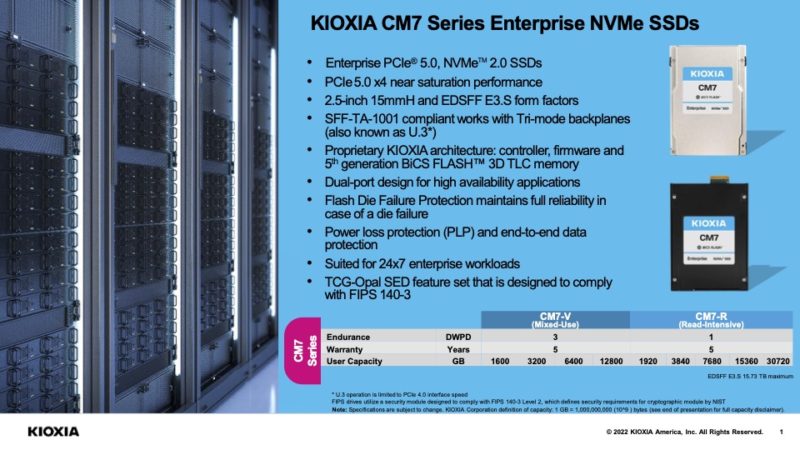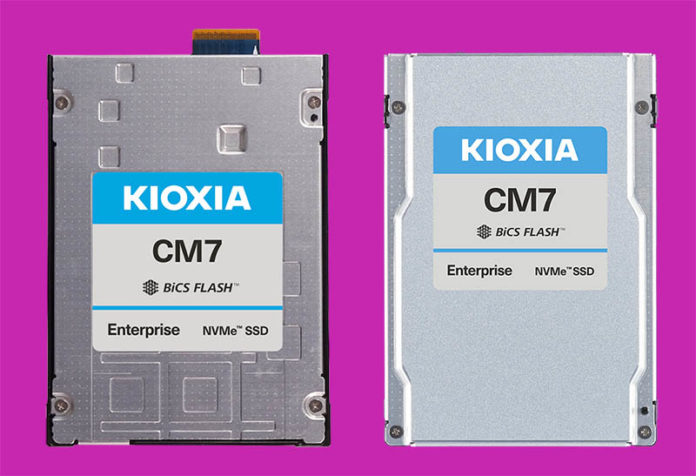The Kioxia CM7 is now shipping to customers. The new SSD is part of a new generation of PCIe Gen5 NVMe SSDs that are awaiting platform availability. With the next-generation AMD EPYC “Genoa” and the 4th Generation Intel Xeon Scalable “Sapphire Rapids” chips arriving in the next few quarters, PCIe Gen5 will go mainstream, and Kioxia is getting ahead of that need with the CM7.
Kioxia CM7 PCIe Gen5 NVMe SSD Key Specs
With the Kioxia CM7 series, the company has features that are designed for “enterprise” IT markets. For example, the CM7 series is dual-port capable for being utilized in high-availability arrays. The Kioxia CD8 series is an example of a drive that skips this feature for larger installations.

The CM7-V is mixed used version with up to 3 drive writes per day (or 3 DWPD). For higher capacities, the CM7-R is the read intensive drive at 1 DWPD of endurance. Capacities on the CM7-V range from 1.6TB to 12.8TB and on the CM7-R we get 1.92TB to 30.72TB. Perhaps notable here is that there are not just high-end capacities, but also that there are no sub 1TB nor sub 1.5TB capacities in the new generation of drives.
The new drives come in both 2.5″ as well as EDSFF E3.S form factors. We expect E3.S to be what OEMs like Dell and HPE use to transition traditional IT from 2.5″ to EDSFF over the next few years.
You can learn more about E1 and E3 EDSFF taking over from M.2 and 2.5 in SSDs and in the video above.
Final Words
We did not get full performance specs on the new drives, but they are rated at almost 14GB/s read. Kioxia says it is already shipping these drives to major customers. Our best sense is that those are large OEMs preparing for future launches or to go alongside some of the PCIe Gen5 Arm CPUs that are popping up.
Still, it is exciting to see the next-generation come along sooner. PCIe Gen5 does not just mean faster drives, but it also means that we can have a similar per-SSD performance while only using a PCIe Gen5 x2 link instead of a Gen4 x4. That means high-availability systems can hit higher drive counts and performance with the next generation of technology. Also, we can get more aggregate performance and capacity from more drives with fewer PCIe lanes.
We will, of course, have more on the new drives in the coming months.





With PCIE 5.0 SSDs on a large enough “system” (cluster/ whatever), I’d argue that in some (many?) cases you could get enough performance with just x1 lane per SSD- that puts you at the same throughput as a PCIe 3.0 x4 drive- you could hang a ton of drives off a single CPU in that scenario.
Almost a year along now and the CM7 series are nowhere to be found, can’t buy them anywhere.
Dunno if links are allowed, but a guy in HPE was showing off 1.2 PB of these with the HPE branding and part numbers. Doesn’t seem like it’s released yet.
https://www.facebook.com/groups/282932402562324/permalink/1453690018819884/?mibextid=W9rl1R